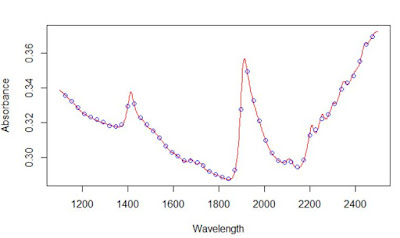In the NIR spectrum there is a high correlation between most of the wavelengths, so we can reduce the spectra to allow more space between the wavelengths to manage better the spectra matrix.
The comercial softwares has the functions to do it, for example in Win ISI we can configure the wavelengths of a NIR 5000 which has 700 wavelengths if we configure the wavelengths selection to 1100-1498,2 , to 350 if we select 1100-2498,4. In this process we don´t lose relevant information for the development of a calibration, so it is applied quite often.
In the Prospectr there is the Binning, were we select the interval of wavelength selection in two ways:
X.bin <- binning(X, bin.size = 10)
In this case we keep one data point for every ten data points.
2:
X.bin2 <- binning(X, bins = 50)
In this case we reduce the spectra matrix to 50 equal spaced data points.








